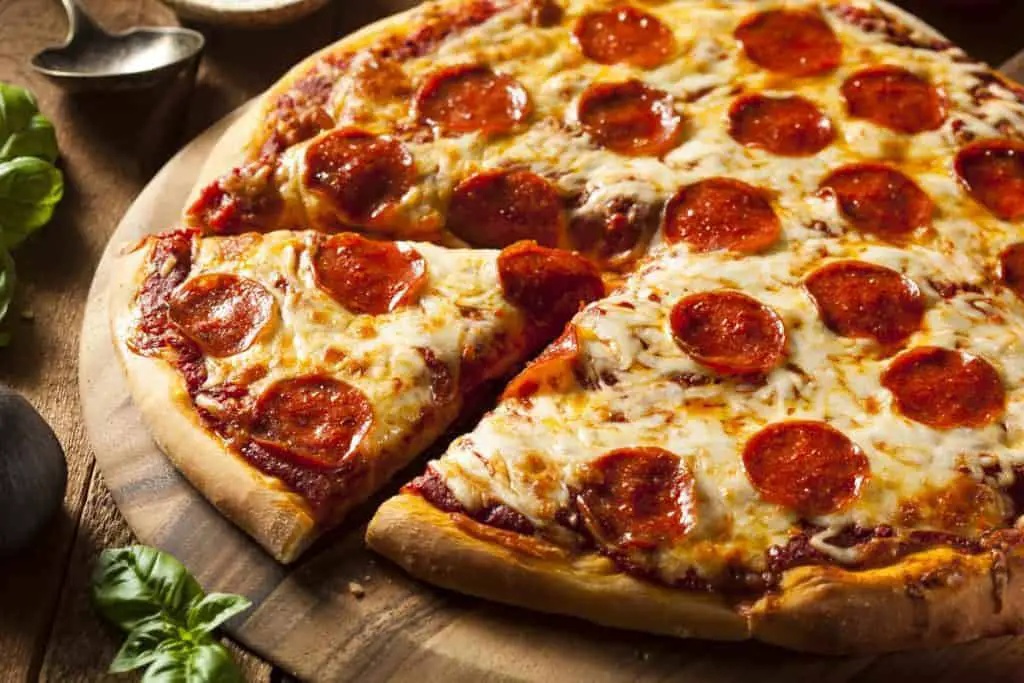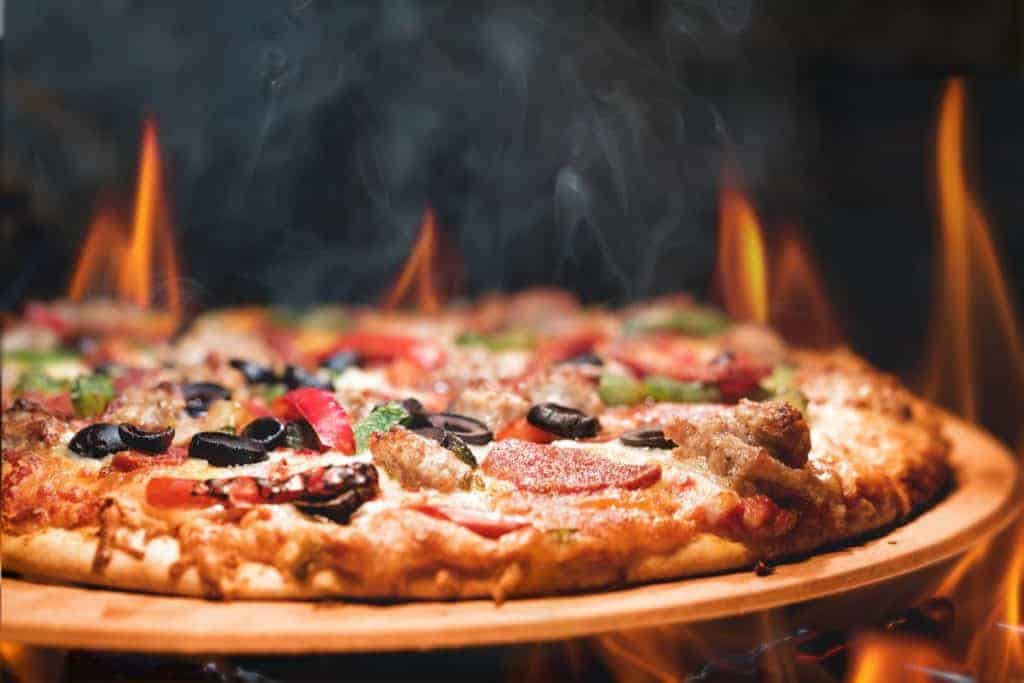This post contains affiliate links.

Despite its delicious aroma and taste, pizza normally comes with an off-putting amount of grease. And while you may choose the healthiest toppings, it may still end up with a greasy layer on top. Why is that?
Grease that forms on pizza is caused by toppings, specifically cheese, being cooked faster than the rest of the pizza. Cheese and meats have high-fat contents stored within them, that are released during cooking. The high heat that the pizza is baked at causes the butterfat in the cheese to melt, and allowing a layer of grease to form over the pizza.
Nonetheless, pizza is a favorite food amongst many. Whether you like it with peppers, pineapple, or even anchovies, pizza is a customizable dish that’s perfect for every occasion.
Why Are Some Pizza’s Greasy, and Others Aren’t?
Toppings
Toppings can vary on pizza, and so can the greasiness. What you’re adding to your pizzas can make them more, or less, greasy when you cook them. Two of the highest grease producers on pizzas are:
- Pepperoni: Pepperoni is a common favorite, and whilst tasty, it is one of the biggest contributing factors to pizza grease. Most pepperoni is made with pork, or beef, which contains high levels of fat. These levels allow for grease to be produced while the pizza is baking, and to make your pizza messier.
- Cheese: Cheese is a necessity for any pizza, but the type of cheese you’re using could contribute to grease production too. Cheese with high-fat content is going to produce more moisture. It’s why you never really see cheddar cheese on pizza, or cheeses with whole milk.
Crust

This may be your favorite or least favorite part of a pizza. (I personally love it.) Regardless, it’s one of the biggest factors in how much grease your pizza makes. Thin crust pizza actually produces more grease than thicker crusts will. Why? Thicker crusts cook from the bottom up. The thinner crust will cook faster and make the cheese melt faster. This gives the oil the time to slide all across the pizza and make it soggier.
Cooking Practice
How do you cook your pizza? If you’re cooking it with the heat beating down on top of the pizza, you’re going to end up with a gooey-er meal. Like mentioned earlier, thicker crusts produce less grease because they cook from the bottom up. If you go to a run-of-the-mill pizza joint, they probably cook their pizza with a heat applied on the top, as opposed to the bottom. If this is the case, that pizzeria might have greasier pizzas, as opposed to higher-end dining places.
How To Make Pizza Less Greasy
So you know what makes your dish greasy, but how do you stop it? There are a couple of ways you can make your pizza as grease-free as possible.
1. Bake at a Higher Temperature
Baking a pizza at low temperatures takes a longer time to cook. Allowing for the cheese to melt, the meat to sweat, and grease to form all over your pie. If you cook your pizza at a higher temperature will make the pizza light, fluffy, and less greasy.
Most cooks believe that 400 is the perfect temperature to cook your pizza out for the least amount of grease.
2. Precook Your Meat
When the meat is cooked, it starts to secrete oil. While it may seem a tedious task, cooking whatever meat you choose to put on your pizza before you place it on your pizza, will keep excess oil off of your pizza.

3. Cook With a Thicker Crust
While thick crust might not be up to your taste, it is an option for a less greasy pizza. Thin crust pizzas don’t absorb the oil produced as well and end up making the pizza soggier overall. Thicker crust pizzas absorb grease better, keeping it the perfect fluffy crust you want.
2. Using Low Fat Cheese and Toppings
Cheese, and other toppings, can hold high-fat contents. The fattier the topping, the more grease it’s going to produce. Using cheese produced with lower fat or skim milk is going to make your pizza less soggy.
Fat-filled toppings such as olives, or anchovies, will also produce more grease. Try using healthier options, such as peppers, when topping your pizza.
Does Blotting Pizza Make It Healthier?
Maybe you have been an avid pizza blotter, or maybe you eat it as is, but when thinking about greasy pizza you might think: “does blotting my pizza with a napkin make it healthier?”
In short, yes! Blotting pizza and removing the pooled grease, can remove quite a bit of fat and calories. According to Jim White, R.D.N., of the Academy of Nutrition and Dietetics, “Blotting could save as much as 20 to 40 calories per slice.” In the long run, that can add up to quite a bit.
“Blotting could save as much as 20 to 40 calories per slice,”
Jim White r.d.n
So if you’re looking to make the healthiest possible pizza, not only should you be choosing the healthiest possible ingredients, removing any excess oil can help as well.
Does Grease Really Matter?
We’ve talked a lot about how to make your pizza less and less greasy, but does it really matter how greasy your food is?
No.
In fact, most cooks don’t advise removing it. As much as we preach against fat, that’s where all of the flavors in food is. There’s a reason those fat-free cookies don’t taste as good as the Oreos. If you’re looking for healthier options in foods, avoiding fatty foods altogether is your best option.

Pizza is a household favorite, and it’s well known to be not the healthiest food on the planet. So instead of trying to make your pizza as healthy as possible, enjoy it as it is. Add anything you’d like. There’s plenty of unhealthy things in life, things we should avoid and rid ourselves of. But in the grand scheme of things, one greasy slice of pizza (every once and a while) isn’t going to kill you.
So keep the grease on. It tastes better that way anyways.

